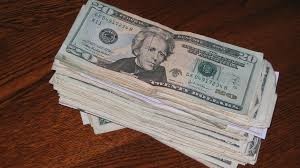 “Americans are saving more, just not in their employer-sponsored retirement plans,” writes Tom Anderson in a cnbc.com column, citing “a new analysis by retirement market researcher Hearts & Wallets.” Other excerpts from his piece:
“Americans are saving more, just not in their employer-sponsored retirement plans,” writes Tom Anderson in a cnbc.com column, citing “a new analysis by retirement market researcher Hearts & Wallets.” Other excerpts from his piece:
“Average annual household savings increased almost a full percentage point to 5.5 percent last year, up from 4.6 percent in 2013, based on Hearts & Wallets’ annual survey of 5,500 U.S. households. (The personal savings rate this May was 5.1 percent, according to the latest release from the Federal Reserve Bank in St. Louis). But the percentage of household savings that went into employer-sponsored retirements plans like 401(k)s fell 7 percentage points to 22 percent in 2014, and households participating in employer-sponsored plans declined to 56 percent last year from 60 percent in 2013.
“The analysis, based on 2014 data and released Tuesday, found that an employer match can double the annual retirement plan contribution among workers who said that getting the employer match was very important to them. In that group, the power of the employer match was strongest among savers earning $48,000 to $95,999: they increased their average retirement plan contribution by 2.5 times because of an employer match, according to Hearts & Wallets.
“Only 10 percent of the people surveyed were eligible for a retirement plan that offered a matching employer contribution of more than 6 percent of an employee’s salary, a third said their employer match was 4 to 6 percent, roughly another third said their match was 3 percent, and 24 percent said their employer offered no match.
“The size of your matching contribution often depends on the size of your employer.
“Even if the employer match is increasing, workers are still leaving money on the table. Financial Engines, an investment advisory firm, estimates that about a quarter of retirement plan participants are missing out on receiving the full company match. That translates into average loss of $1,336 per person each year or an estimated $24 billion of missed retirement savings in total.
“However, the number of people contributing to their retirement plans to earn at least the match is gradually rising. Nearly three-quarters of plan participants in 2014 were saving at a level that will allow them to receive the full benefit of the employer match, according to Aon Hewitt. That was 1 percentage point higher than in 2013. And among people who are currently saving below the employer match, nearly 30 percent are enrolled in an automatic escalation program that will gradually increase their savings rates to qualify for the full employer contribution.
“The employer match isn’t the only way to increase the use of retirement plans. Automatically enrolling workers in these plans can also boost participation. The share of employers with more than 80 percent participation rates in defined contribution plans increased from 50 percent in 2010 to 64 percent in 2014 as the share of companies offering automatic enrollment rose from 57 percent to 68 percent, according to study by Tower Watson.”
